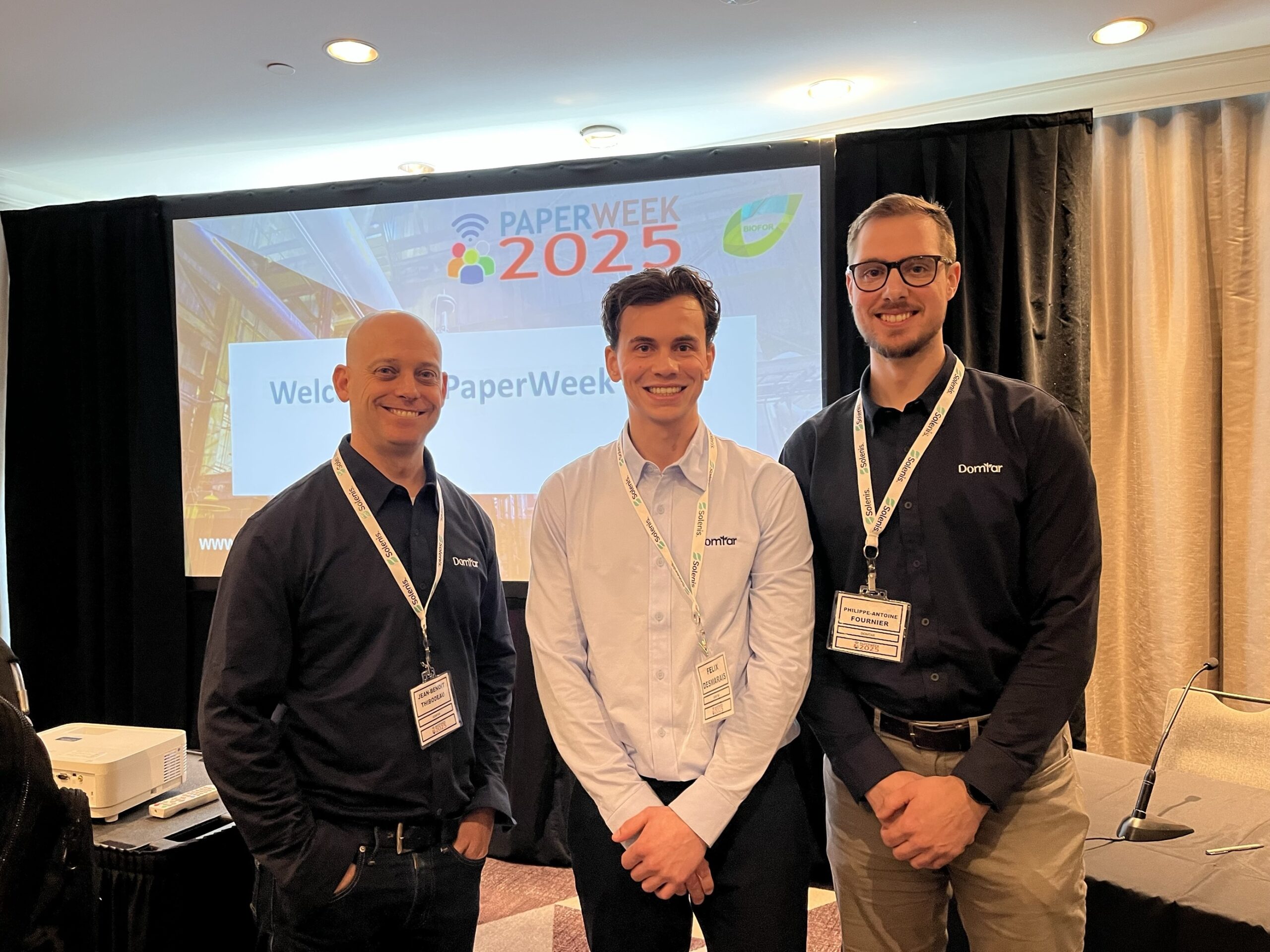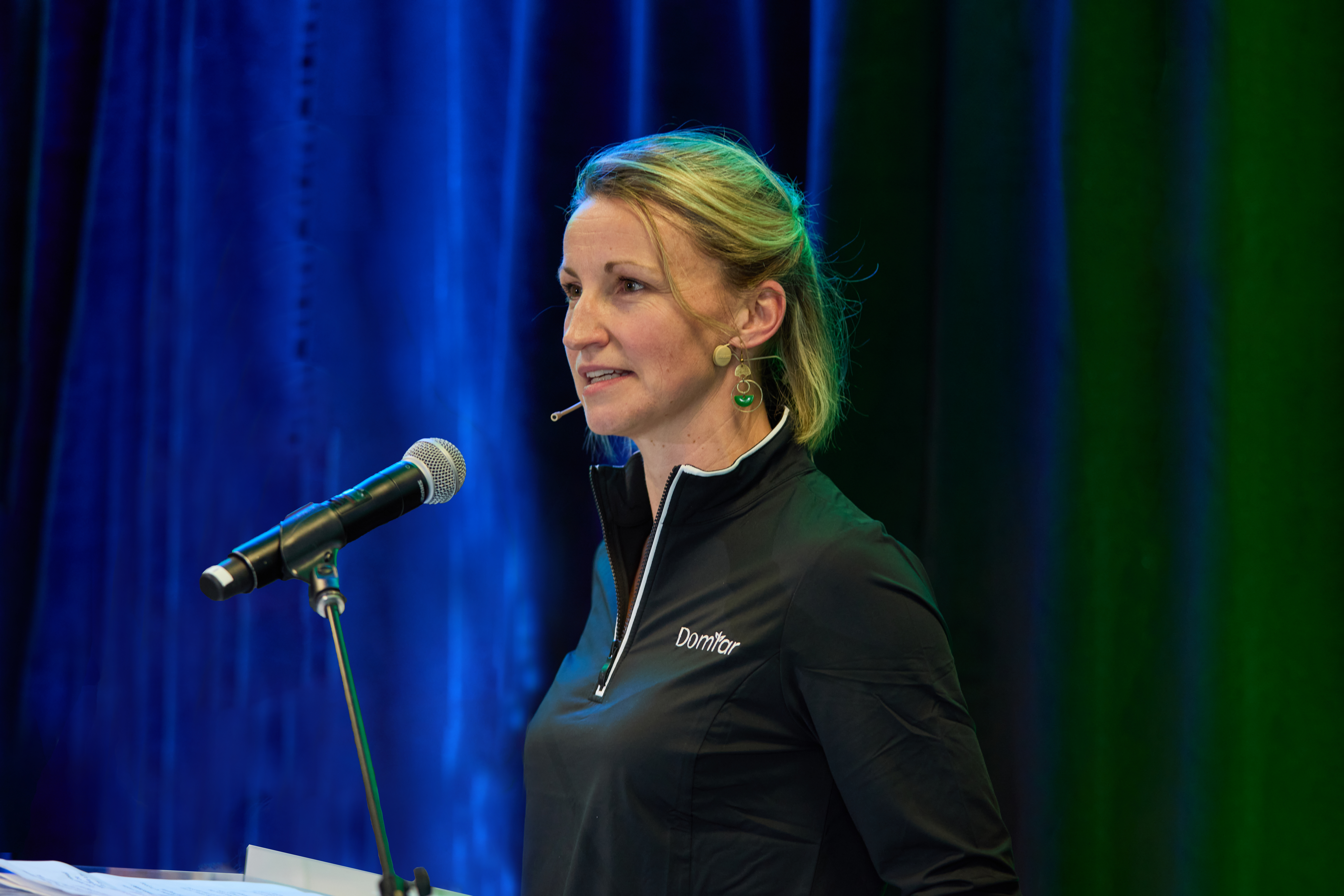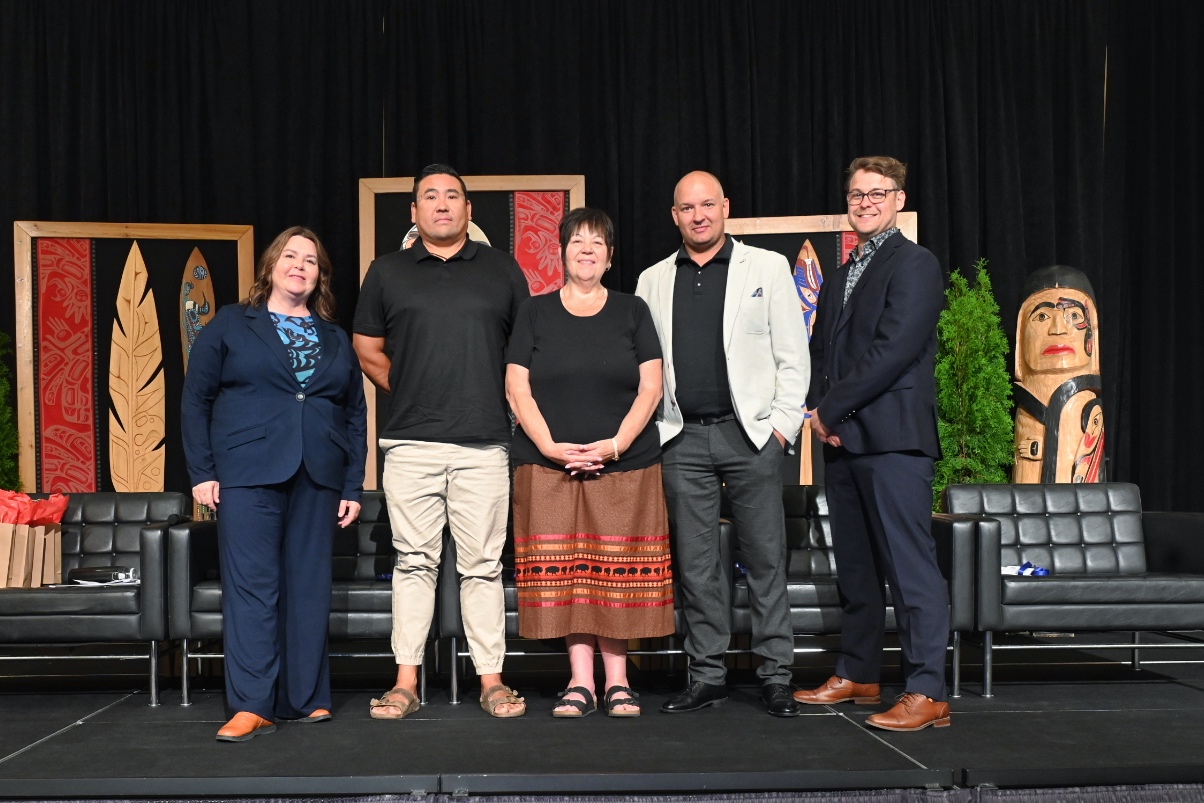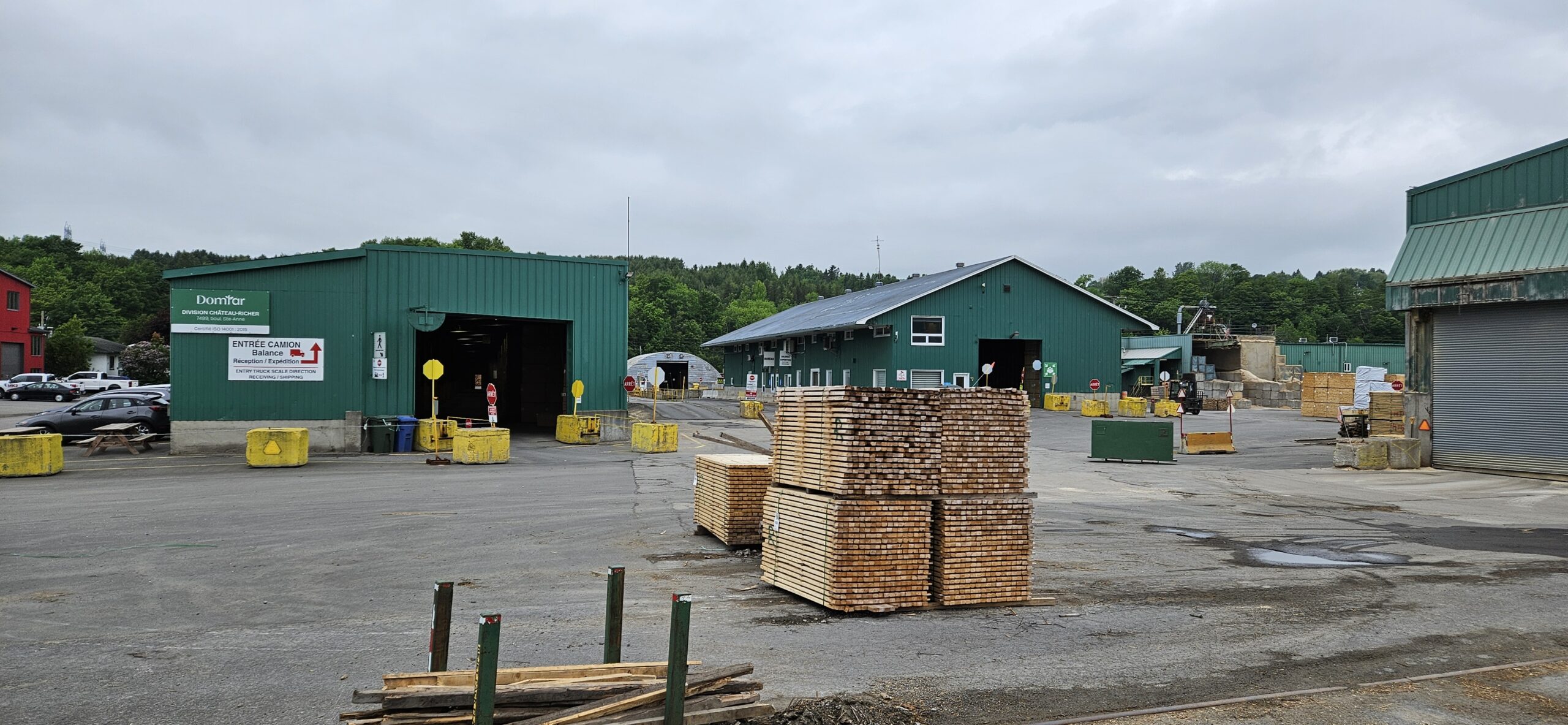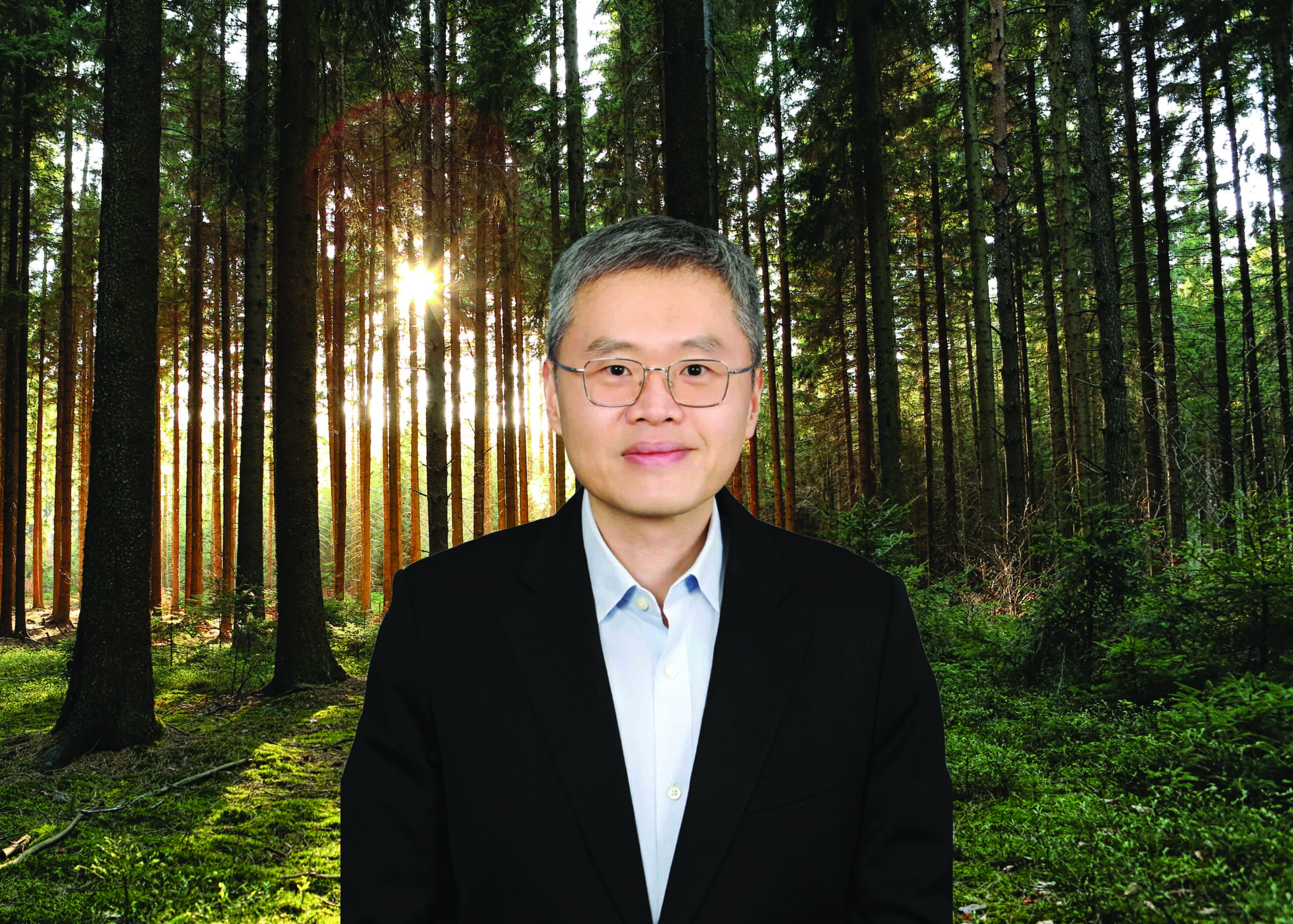Earlier this month, representatives of the North American forest products industry met at PaperWeek Canada to share insights and expertise on issues that the industry will face in 2025. The conference, held February 10-13, 2025, in Montreal, Quebec, Canada, and online, is the Pulp and Paper Technical Association of Canada’s flagship conference. The annual event has evolved over the years to include a dedicated segment, known as BIOFOR, that is focused on the industry’s biorefinery and bioeconomy innovations.
This year, the PaperWeek 2025 and BIOFOR agendas featured a strong Domtar presence. We participated in seven sessions, highlighting our innovation and leadership in the industry.
PaperWeek Canada Sessions Highlighted Innovation
Domtar had the opportunity to share three of its recent continuous improvement projects with industry colleagues.
Recovery of Thermal Waste at Our Newsprint Mill in Clermont, Quebec
The Clermont Mill produces 221,000 metric tons of newsprint per year on a paper machine using thermomechanical pulp (TMP). The steam required for the process comes from the TMP reboiler, a biomass boiler and two 28 MW electric boilers. The mill worked with Hydro-Québec, which offered $3 million in financial assistance, to reduce steam consumption by recovering the energy contained in thermal waste at the mill.
The project uses heat exchangers and two heat pumps directly in the process, which is a first in the paper industry in Quebec. The project resulted in an annual savings of $800,000 and 15,000,000 kWh — enough to power 880 households.
Mario Girard, Clermont Mill’s superintendent of energy, projects and engineering, says, “Several spectators attending our presentation on the heat recovery project came up to me to testify to Domtar’s audacity in installing heat pumps in such a ‘hostile’ environment for this type of equipment. They said, ‘If Domtar has done it, there’s no good reason not to.’”
Developing High-Potential Talent through Effective Problem-Solving: Tackling Evaporator Fouling in a Pulp and Paper Mill
Our Windsor Mill solved a major problem with evaporator fouling by breaking it down into smaller issues, empowering sub-teams to tackle each one.
One of the key issues was controlling steam temperature to Evaporator #1 and the concentrators. High steam temperatures contributed to increased deposition risk. With limited resources, the project fast-tracked the development of an engineering intern by certifying him as a Lean Six Sigma Yellow Belt and giving him the leadership of the steam temperature problem-solving effort. With support from the pulping technical team, he led the team through the DMAIC process, identifying potential causes and developing a validation plan within a tight timeline.
“Problem-solving in continuous improvement enables us not only to improve our operational efficiency and the performance of our equipment, but also to develop our leaders to their full potential,” says Jean-Benoit Thibodeau, continuous improvement manager at Windsor Mill and one of the project’s participants.
Optimizing Chip Quality Control – Insights from a Gage R&R Study on Bark Content
To better understand variability in measuring bark content within the wood chips feeding our process, the Windsor Mill conducted a Gage R&R (Repeatability and Reproducibility) study. This study revealed the importance of avoiding overreaction to single test results by providing deeper insights into measurement variability. (Our Plymouth Mill completed a similar project, with similar results.)
By implementing stronger tracking tools and drawing more reliable conclusions, we saw tangible operational and financial benefits that can be applied to other raw materials. “This improves our understanding of the measurements and really helps to prevent decision error for the process,” says Kim Therrien, who worked on the project as a candidate to the engineering profession at Windsor Mill.
BIOFOR Sessions Looked to the Future
Domtar also had significant representation on several panels and roundtable discussions at BIOFOR.
From New Zealand to Canada – How First Nations Are Shaping the Bioeconomy?
This PaperWeek 2025 BIOFOR panel discussion was co-chaired by Lana Wilhelm, Domtar’s director of Indigenous relations, and Virginie Chambost, Domtar’s vice president of innovation for sustainability and climate and chair of this year’s BIOFOR committee. It provided a platform for dialogue and collaboration, showcasing the leadership and contributions of First Nations in Canada and the Māori in New Zealand in advancing successful bioeconomy and bioenergy projects.
Funding for Biorefinery Value Chain Development
Chambost also served as co-chair of this keynote session and roundtable discussion, and Domtar’s Senior Manager of Global Carbon Strategy Hooman Rezaei participated in the roundtable discussion and presented a forest products industry’s perspective on the importance of funding programs to support the implementation of innovative solutions for industrial decarbonization. This session explored international collaboration opportunities through Horizon Europe and provided insights into how Domtar can leverage European and Canadian funding mechanisms to accelerate the development of sustainable biobased products and carbon solutions.
“The forestry industry has historically been at the forefront of sustainability efforts, particularly in maximizing the share of renewable energy used in our manufacturing sites,” he says. “As we advance our efforts to further decarbonize our operations and value chain, we are implementing innovative technologies that come with greater technical and investment risks. Funding programs that support the advancement and accelerate the widespread adoption of these emerging technologies play a critical role in enabling companies like Domtar to achieve their strategic sustainability targets.”
Price of Carbon — How Can Companies Edge?
Another PaperWeek 2025 BIOFOR session explored how companies can leverage carbon markets for strategic advantage. The session highlighted the critical role of carbon management in long-term sustainability strategies, offering practical guidance for industries seeking to maximize carbon value while contributing to NetZero commitments.
“Given Domtar’s focus on sustainability, understanding how companies leverage these tools is key for integrating carbon value creation into our business model and de-risking investments in carbon projects,” says Chambost, who co-chaired the session.
Emerging Carbon Capture Technologies and Projects Seeking to Maximize the Value of Carbon
This session explored the evolving role of carbon capture in forestry, highlighting industry perspectives and practical success stories. Participants gained insights into key technologies, performance metrics and how carbon capture can drive long-term decarbonization and NetZero commitments.
“Exploring emerging carbon capture technologies is one of the pathways Domtar is considering to drive meaningful decarbonization in our industry. Gaining insights into technology readiness, deployment challenges and performance metrics is key to creating long-term value and investment opportunities,” says session co-chair Chambost.
Learn more about the topics covered at PaperWeek 2025.



